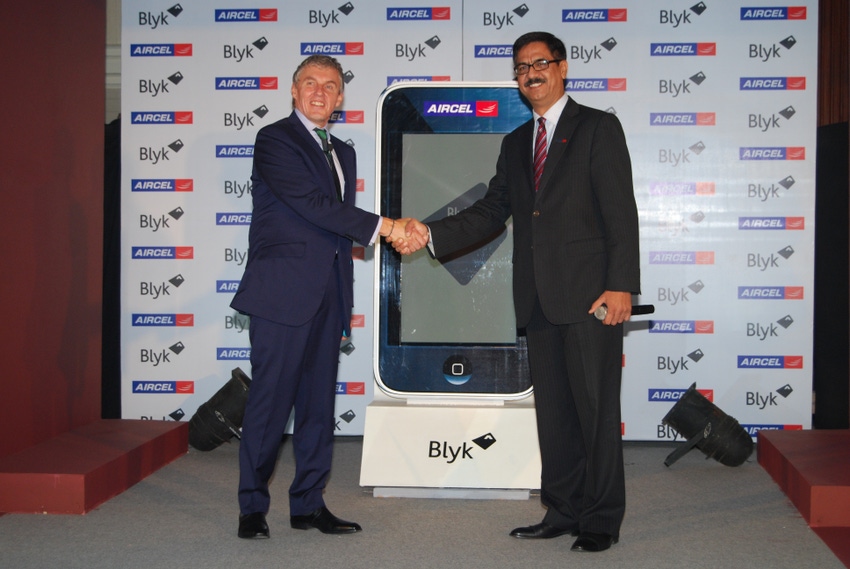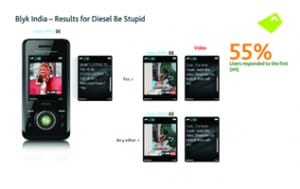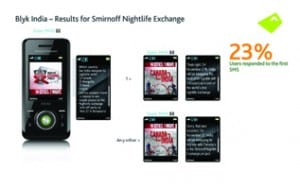The fountain of youth - Aircel and Blyk
Indian carrier Aircel teamed with youth media firm Blyk to launch a content and advertising service in November 2010. It represented the first deployment for Blyk outside of Europe, the firm having switched its model from ad-funded virtual operator to carrier partner after its MVNO play failed to gain the necessary traction. Blyk co-founder Antti Öhrling and Aircel COO Gurdeep Singh spoke to Mike Hibberd about the drivers behind this latest partnership, and the firms’ plans for the future
March 9, 2011

Indian carrier Aircel teamed with youth media firm Blyk to launch a content and advertising service in November 2010. It represented the first deployment for Blyk outside of Europe, the firm having switched its model from ad-funded virtual operator to carrier partner after its MVNO play failed to gain the necessary traction. Blyk co-founder Antti Öhrling and Aircel COO Gurdeep Singh spoke to Mike Hibberd about the drivers behind this latest partnership, and the firms’ plans for the future.
Demographically, India would appear to be the perfect place to launch a youth-centric mobile service. For a start, there are hundreds of millions of young people there—a whopping 55 per cent of the Indian population, which is approaching 1.2 billion in total, is below 40 years of age.
Mobile penetration is over 60 per cent, and even higher among the younger population, while fixed penetration is low—and in decline. Today 95 per cent of Indians’ first telephone calls are made over mobile networks and, with fixed broadband penetration languishing in the single digits, the Indian internet experience has become, de facto, a mobile internet experience.
A regional player in Tamil Nadu since its launch in 1999, moving four years later into Chennai, Aircel embarked upon a nationwide expansion in 2005. At the end of January this year, as the seventh-placed player in the Indian mobile market, Aircel had just over 54 million customers, according to estimates from Informa’s World Cellular Information Service. More than 85 per cent of those customers are in the 14 – 24 age bracket, says COO Gurdeep Singh, with the remainder between the ages of 25 and 35.
Singh explains that his company made the youth market its target from the beginning of its expansion, placing a safe bet that mobile would be the segment’s medium of choice. As the market has evolved, the segment’s behaviour has marked it out, he says.
“The youth are far more reliant on peer recommendation,” he says. “They love to update themselves, to have real time information about what’s happening in their city. It’s important to give them a service like this in a manner that is non-intrusive, participative and permission based. That’s where we spotted the opportunity to work with Blyk.”
The Blyk on Aircel service provides a range of content to its customers, covering the familiar territories of entertainment, sport and lifestyle. Over a period of six to eight weeks, says Blyk’s Antti Öhrling, users’ preferences become clear, making way for the targeted advertising which is at the heart of the Blyk proposition.

BlykIndia_Diesel_online
For the time being, however, Aircel is not looking to Blyk to monetise its advertising inventory. Instead, says Singh, it is a weapon deployed in the face of rampant churn. “What’s most interesting for us is that, in a hyper-competitive market like India, this can really act as a differentiation and retention tool,” he says. “There are 14 operators in this market and churn is very high; 90 days after acquisition we retain just a little over 60 per cent of new customers. But with Blyk our retention level moves up to 89 per cent. So it’s really meeting our needs.”In acquisition terms the service is also proving useful with member-get-member schemes, Singh says. “We have a consumer insight group which keeps in touch with the customers, making sure they find it good enough to recommend to their friends. People find this product so infectious that it is the right kind of thing for member-get-member and we see a good number of acquisitions coming through that,” he says.
So far Aircel has deployed the Blyk service in 20 metropolitan markets. By Mid-March 2011 it had attracted more than 300,000 users, and is adding in the region of 25,000 a month, Singh reveals. From the middle of this year he expects this to ramp up to 30,000 adds a month and, by 2012, he wants to see ten per cent of all rural connections and 25 per cent of all metropolitan connections joining Aircel through the Blyk offering.
The plan is that the service will be available in more than 100 cities by 2012, keeping pace with the carrier’s 3G rollout, which began in March this year. That 3G rollout, it is hoped, will improve both the service experience and the incremental revenues derived from the offering.
Currently, says Singh, Aircel ARPU sits at just $3.50, with Blyk users spending above average. “What we have seen with Blyk users is that, in spite of 3G not being there, we’re getting half a dollar extra revenue. That’s why we’re encouraged to make it the mainstay of our acquisition products going forward,” he says.
Today the service makes most use of SMS and MMS channels, with MMS being available across a wide range of handsets in the Indian market. Antti Öhrling reports that, contrary to the firm’s experience in other markets, MMS messages are proving more effective than SMS at generating response and interaction from the end users.

BlykIndia_Smirnoff_online
While the service may currently be delivering benefits primarily in the areas of acquisition and retention, the fact remains that the Blyk proposition is a media channel designed to appeal to brands that are targeting the youth market. The content distributed over the service is intended to stimulate response and, according to Öhrling, this is starting to generate results in India.“On average we have been getting 27 per cent response rates,” Öhrling says. “It’s a little higher than what we expected and so we’re very happy. Because we are interactive we can develop the content on a continuous basis. Within a minute we know whether or not something has worked and I think that, with Aircel, we’re just starting to explore all the opportunities we have.”
Öhrling says that, of all the content made available over Blyk on Aircel, advertising is generating the strongest interactions from users, which chimes with statistics the company has published showing that the Indian mobile advertising market grew by 217 per cent in 2010, compared to 93 per cent worldwide. “Beyond the advertising,” he adds, “we’re finding that the local content, things closest to people’s hearts, that’s what’s getting the best responses.”
In Blyk’s early deployments the company discovered that brands were preferring to use the medium for market research rather than direct marketing. But in India, Öhrling says, the service appeals to brands more in terms of stimulating purchases. “I would say that, for the brands, it brings the user much closer to the purchase than any other medium, and that’s what they feel is very exciting,” he says.
Many of the launch brands for the Indian service are lifestyle firms, beverage and clothing brands, for example. Smirnoff, Red Bull and Bacardi have all run campaigns across the Blyk platform in India, as have Diesel, Levis, Durex, Apple and Nokia. Diesel and Apple both enjoyed response rates of over 50 per cent for the first messages in their campaigns, while Nokia didn’t fare quite so well, with just 13 per cent.
The relationship between Blyk and Aircel is exclusive for the “long term”, the companies have said, meaning that the rest of the market is off limits to Blyk. The firm will no doubt be hoping that Aircel parent, Malaysia’s Maxis, will be sufficiently impressed to want to roll out similar services across its other territories.
“The parent company is watching closely,” says Gurdeep Singh. “Maxis are very excited about the service and this is something they will explore later on, possibly taking it to other group companies.”
If the service proves successful, it will no doubt spawn imitators in the Indian market. But Singh argues that the Blyk platform has the edge. “We evaluated lots of other things before signing up with Blyk,” he says. The platform is an edge, but the knowledge of how to run the service is an edge too.”
Read more about:
DiscussionAbout the Author(s)
You May Also Like











_1.jpg?width=300&auto=webp&quality=80&disable=upscale)


.png?width=800&auto=webp&quality=80&disable=upscale)